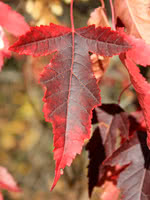Mon-Fri 9am - 5pm Mountain time
Amur Maple vs Black Locust
Acer ginnala
Robinia pseudoacacia
Amur Maple is an incredibly colorful tree. As summer turns to fall, it's bright green leaves turn fiery red. This tree is perfectly suited for urban environments. It's small size allows you to plant it in city yards and beneath power lines. Amur maple can also tolerate urban pollution, moist to dry conditions and is not affected by soil type or pH.
Black Locust is an attractive tree. Its distinctive leaves are made of about a dozen bright green leaflets. It also notable for its fragrant white flowers, which smell of citrus.
Black Locust can grow in many situations, but prefers dry areas with lots of sun. It is robust and is an excellent choice for establishing shade in dry, open areas.
Important note: Much of the Black Locust is toxic to humans and livestock, including seeds, bark, and leaves.
Amur Maple Quick Facts
Black Locust Quick Facts
In row spacing: 2.4 m (8 ft)

